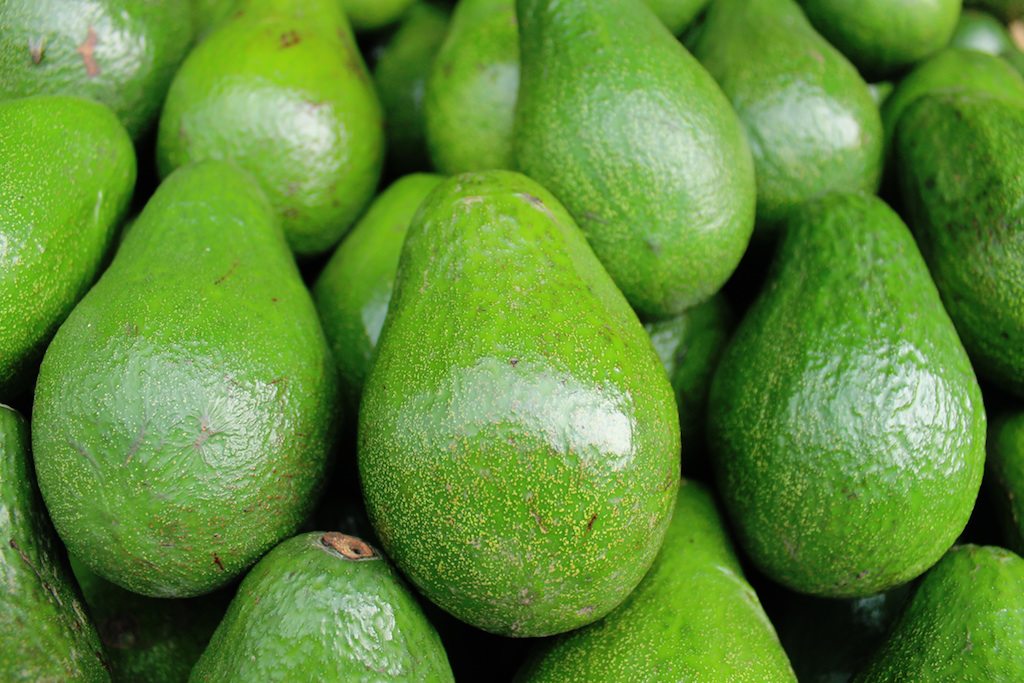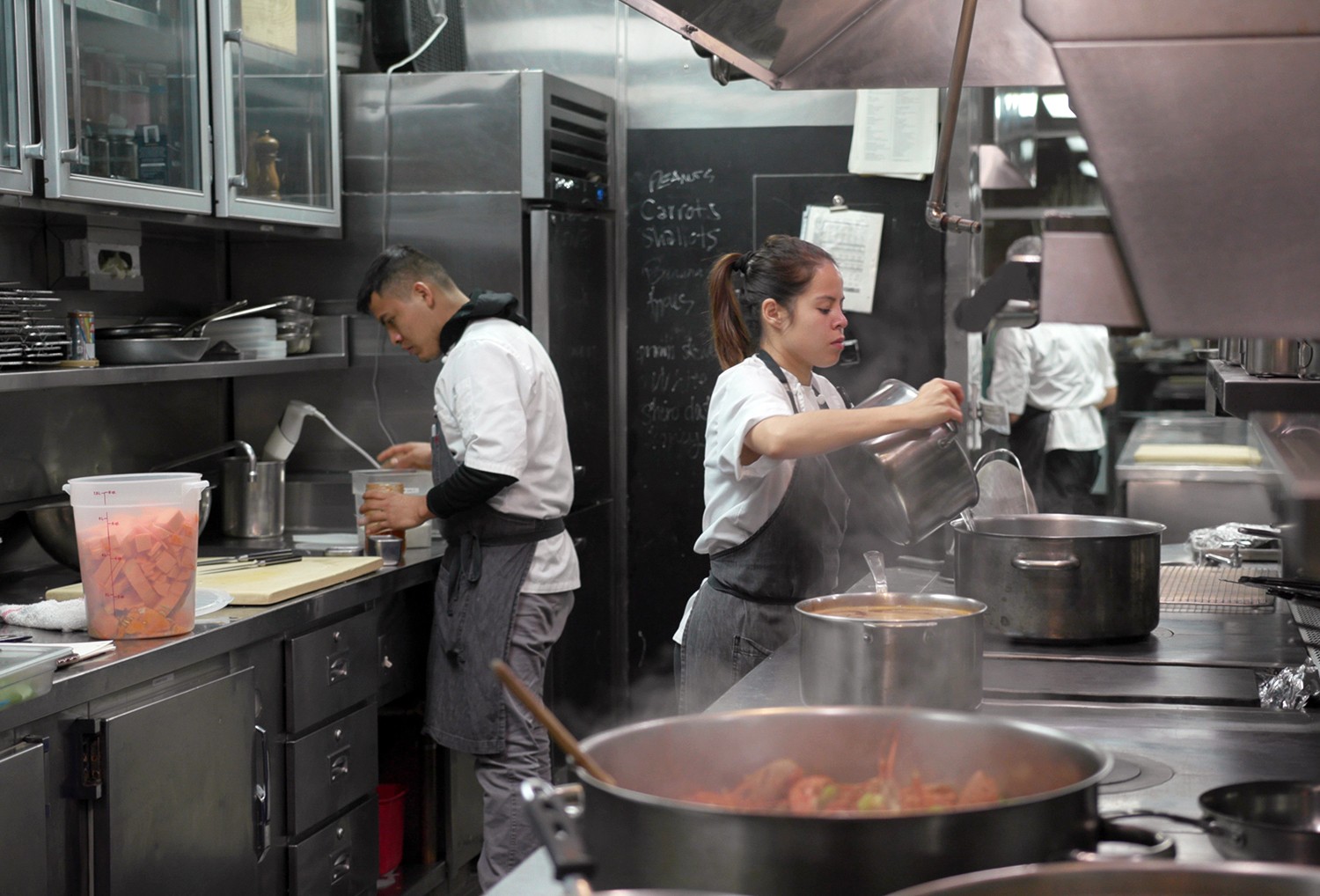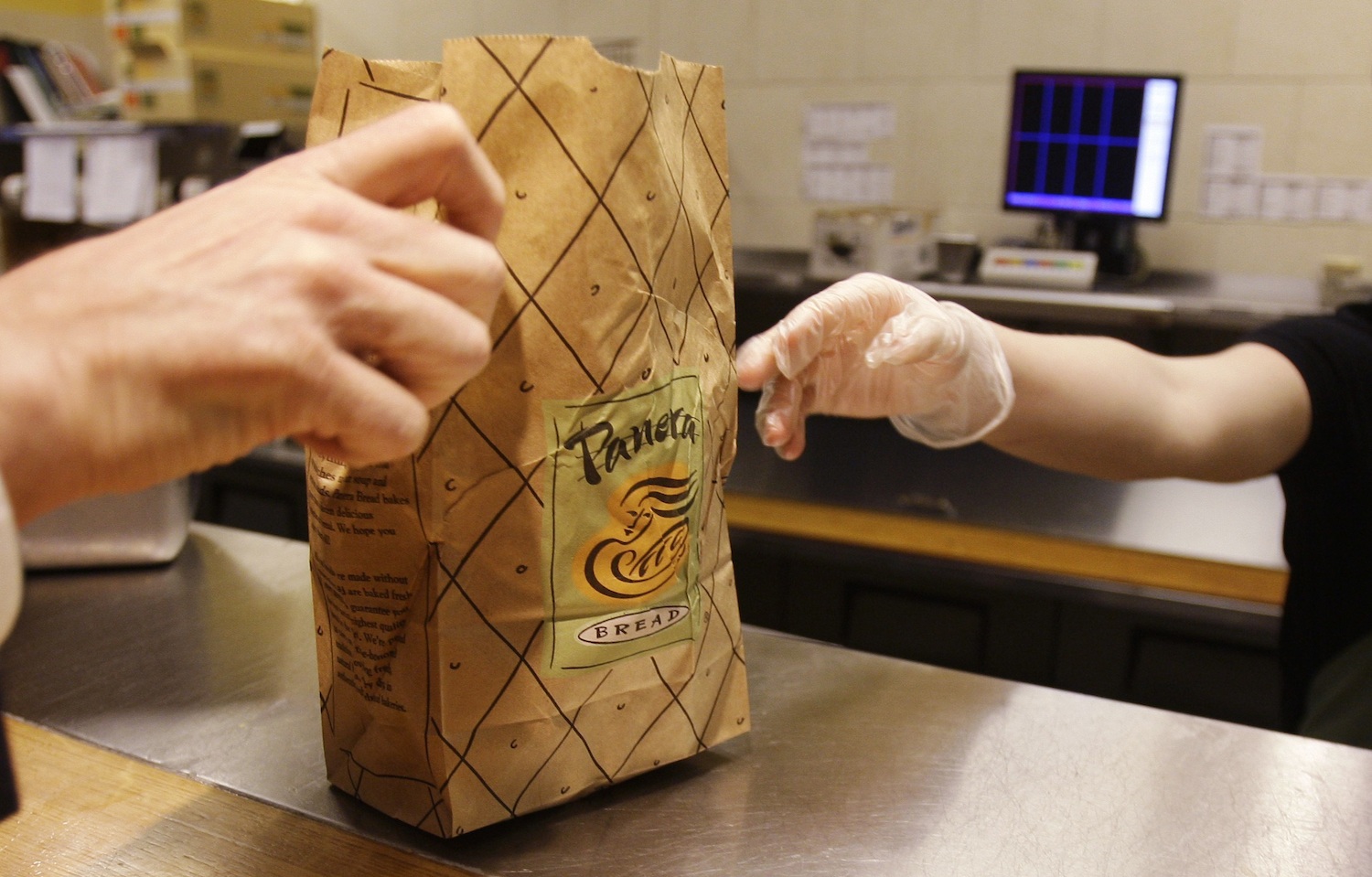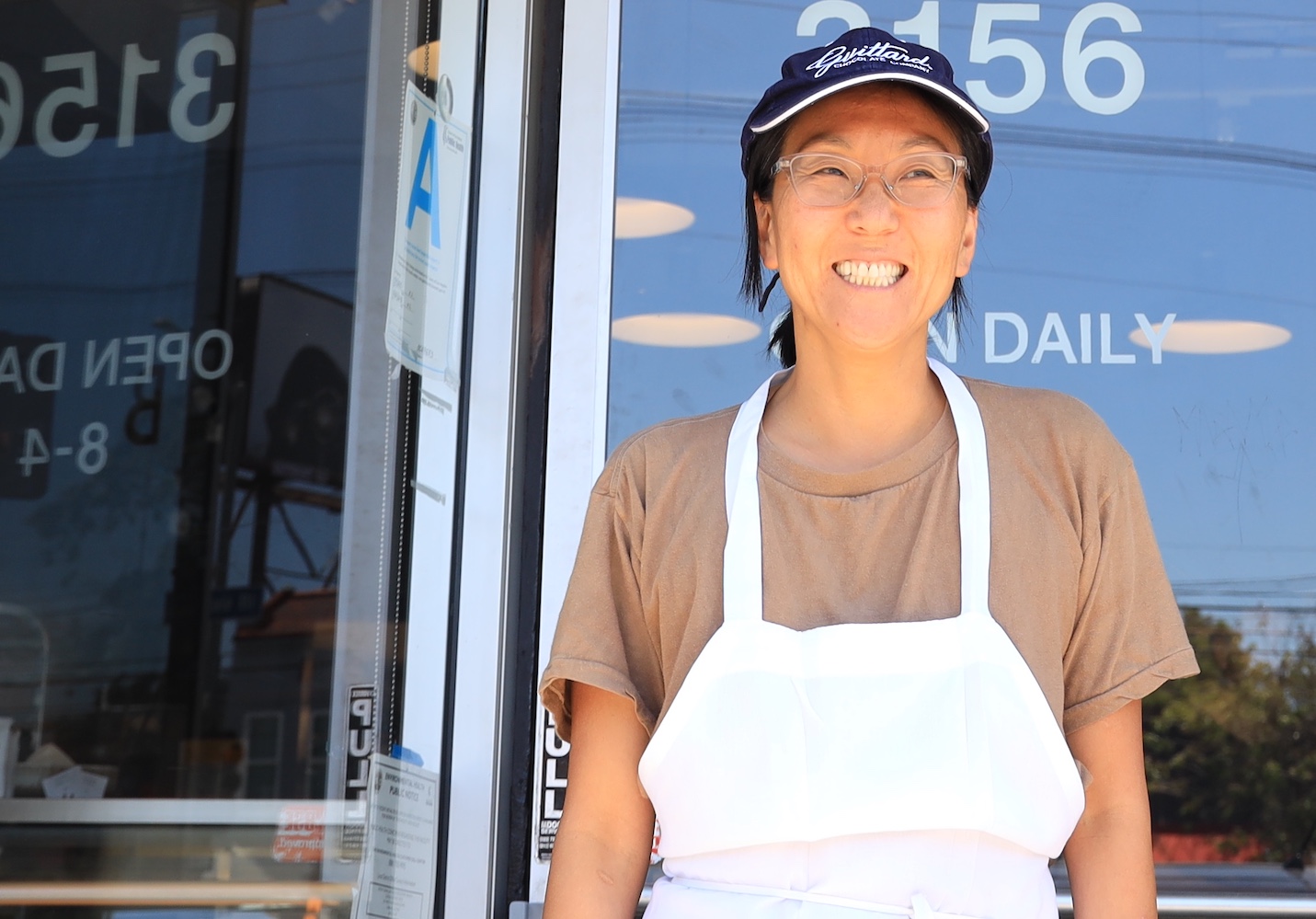
Courtesy of LATTC
Unable to access the upper echelons of chefdom, at a school that lacked the cachet of the big-name brands, these students now stand closer to the entry point of the new dining universe than last year’s celebrity chef does.
If you need more proof that the world is on hold, drive over to the Los Angeles Trade Technical College campus in South Central Los Angeles, freeway-close, as they say, to both the 10 and the 110. That big, modern building is the community college’s new culinary school, all $48 million and 71,100 square feet of it, vacant except for work crews who unload and install $76,000 ovens from Switzerland, 40- and 60-quart dough mixers, and combi-ovens that enable a student to use steam heat or dry heat or both.
Pictured above: A rendering of the new Los Angeles Trade Technical College Culinary Arts building.
The building was supposed to open at the end of this year. “Who knows when” is the revised, Covid-hobbled estimate, according to Martin Gilligan, chairman of the culinary arts program, though he hopes it will be next summer. And yet school is most definitely in session at the country’s oldest continuously operating culinary school, even though classes will be virtual at least until June.
Instead of using those top-of-the-line Swiss ovens, students complete assignments in their home kitchens, where equipment ranges from a decent oven to a toaster oven to a hotplate. They rely on ingredient boxes that contain everything they need to complete their assignments, pre-measured and packaged, distributed at a contactless delivery line in a school parking lot. There’s a lot to be discouraged by, and yet enrollment is at about half of the usual 600 students—because somebody’s going to rise out of the ashes of a devastated restaurant industry into a reconfigured normal, and these students figure it may as well be them.
For there could be a slim silver lining in a business pounded, repeatedly, by the pandemic: Students who haven’t had access to the upper echelons of chefdom before now, at a school that lacked the cachet of the big-name brands, think they see opportunity in the ruins. They tend to dream more of a small business than of empire. Right now, that may be a better fit.
LATTC’s virtual culinary school lacks what some would say is the defining element of a cook’s education: The instructor’s ability to taste.
“Covid has accelerated changes that were already there,” said Paul Freedman, author of Ten Restaurants That Changed America and a history professor at Yale University. “We were already seeing a movement toward casual, toward take-out and delivery, the democratization of dining out and the decline of the celebrity chef as a whole—partly because of #metoo, partly because people have limited tolerance for the tattooed, loudmouth celebrity chef, which even revered figures like Anthony Bourdain, as opposed to jerks like Mario Batali, have to take some responsibility for.”
There were problems with the basic business model, as well. “The mathematical model was already broken before all this happened,” said Richard Coraine, who 25 years ago co-founded Union Square Hospitality Group with Danny Meyer and is now senior adviser to the group. “You have to go through two tollbooths to open a restaurant—rent and overhead is one, and labor is the other—and the price of both of them kept going up. When revenue dips and those costs don’t dip with it? That’s what happened during Covid, which accentuated an existing problem.”
“The paradigm,” he said, “has shifted.”
The current landscape is littered with dead full-service restaurants abandoned in favor of any option that doesn’t involve real estate, walls and a roof; any idea that’s lighter on its feet, from meal kits to contactless pop-ups to places that survive as a new hybrid: the outdoor restaurant and market. Small is good, after years of the bigger the better, and LATTC students stand closer to the entry point of the new dining universe than last year’s celebrity chef does. So they show up for class, even though that means logging in from home.
“Where they’re at is, ‘Let’s keep going, even though my education isn’t hands-on, this is my career path,’” said Robert Wemischner, a chef-instructor at LATTC for 29 years. “‘I’ve made a decision. I want to proceed in a timely fashion. I’m not stopping.’ It hasn’t deterred them.”
—
Wemischner’s professional baking class convenes, if you can call it that, at eight in the morning, four days a week, on Zoom, though only five of his 17 students activate their video and college privacy protocols mean he can’t insist that the others do. Undaunted, he launches into the lesson on choux pastry, the base for eclairs and profiteroles, a challenge even with good equipment because it involves carefully calibrated temperatures, a “falling oven” that starts hot to get the pastry to rise, and then cools down to cook it through. In the new building, there will be banks of programmable ovens that shift automatically from one temperature to another at a pre-set time. For now, Wemischner suggests that students split the difference, settle for 375 degrees throughout, and hope for the best.
“It’ll work,” he said, “but be sure to cook them through, because if the center’s still wet, they’ll collapse. And check to make sure they don’t brown too much. Know your oven and its hot spots, maybe rotate the pans but not immediately, let the puffs rise before you move them. Turbulence might collapse them.” To prevent the bottoms of the pastries from browning too quickly, students can try setting one pan inside another, for insulation.
Each class is a balancing act between inspiration and lowered expectations, but Wemischner doesn’t dwell. He marches briskly through the next steps: how to get the dough into a pastry bag, what type of tip to use, how to pipe the dough onto parchment paper on top of a template that defined the shape, and how to get everything—dough, parchment, template—to hold still. He gives the class tips on the other components of eclairs and profiteroles, the chocolate glaze, fondant icing, ganache, and caramel icing.
In a week, students would upload photos of their efforts, alongside this week’s photos of baklava and strudel. And that would be that. LATTC’s virtual culinary school lacks what some would say is the defining element of a cook’s education: The instructor’s ability to taste. Wemischner can judge texture, appearance, even plating, but he’ll never know if a student used too much salt or overworked the dough and turned out a tough pie crust.
“There was a fear of tasting things that aren’t regulated,” said Wemischner, who teaches restaurant management as well. “We do not eat food that we cannot see being prepared. They show me pictures and maybe a comment, ‘My daughter, son, husband, wife reacted very well to this,’ and I’m asking them to be as specific as possible. I go through the albums to look at every phase to make sure they understand what I’m after. I can see what I’m looking for in a photo. But I can’t tell if they put too much salt in it. I can’t make splitting-hair distinctions.”
“It’s the next best thing,” said Wemischner, which pretty much sums up the entire school year.
—
Eric Campbell, one of Wemischner’s restaurant management students, started selling barbecue over 20 years ago to pay for college. He did it again when the church he attended hosted barbecues to raise funds. But it was always a sidelight because he didn’t know how to take the next step, didn’t see how to quit his healthcare day job to make a living making food.
So he enrolled at LATTC, at age 40, “because there were still things I didn’t know. Opportunities would come to me and somebody would ask where I went to school. You run into that enough, you ask: How can I jump this hurdle? So, I decided to go to school to acquire the knowledge I didn’t have.”
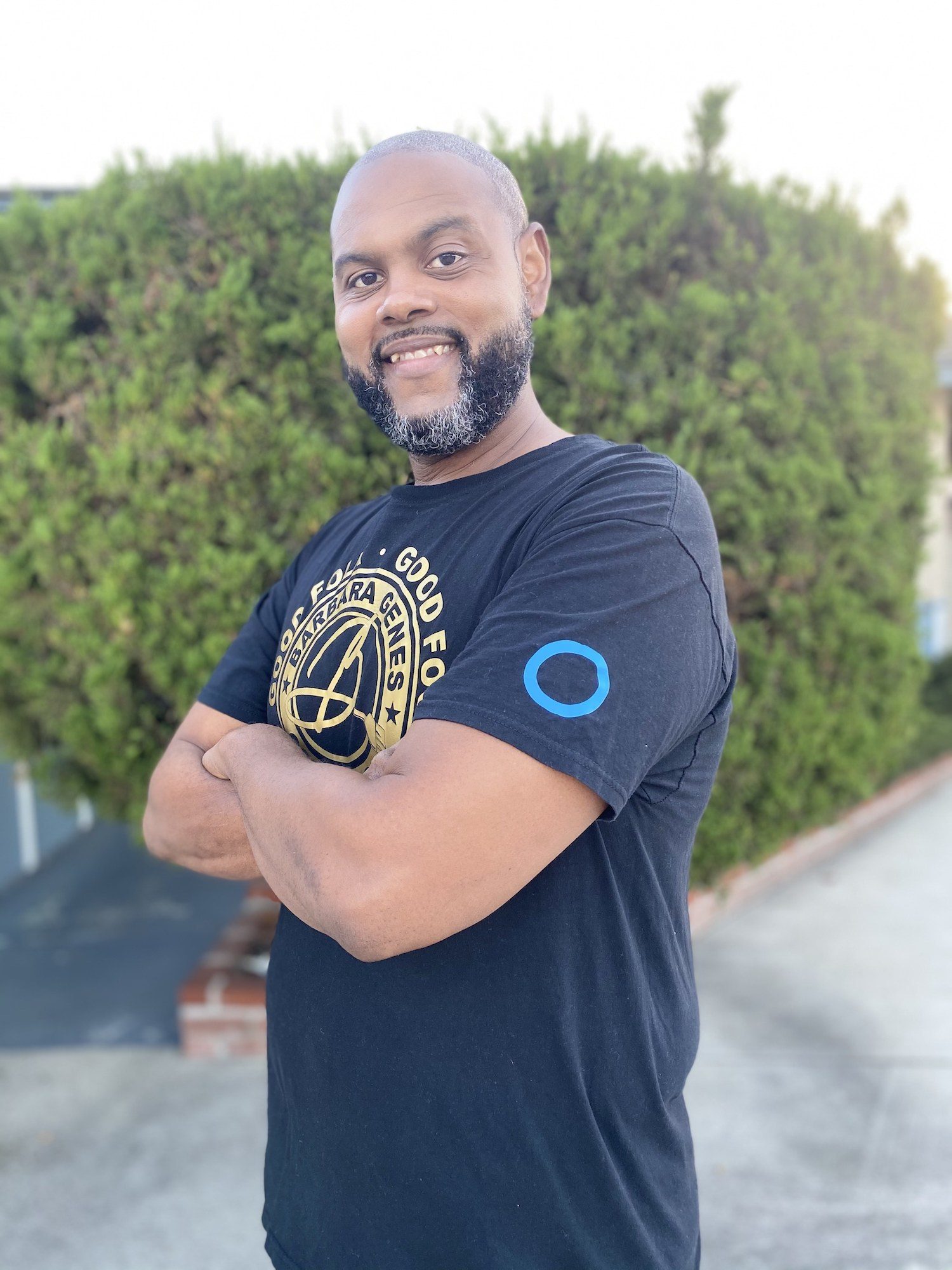
Eric Campbell
Eric Campbell, 40, enrolled at LATTC after selling barbecue for 20 years as a side gig. He wanted to take the next step in making a living cooking food.
Campbell is the student we remember from childhood, the one who always has his hand in the air and always knows the answer. He attends class seated in front of an oversized logo for his catering business, Barbara Genes’ Soul Food, named for his grandmother, who taught him how to cook. He’s one of the volunteers who work the ingredient handout in the school parking lot, showing up at 7 a.m. to help the instructors measure and pack up ingredients. His family has had to get used to his pace at home, he said, “because I might commandeer the kitchen for a whole day, make bagels, English muffins, everything in one day. I’m cranking out assignments, and then my family gets the kitchen back.”
“My entire dream is to own a food company that will embody a few different streams,” he said. “A catering stream. Products—I already have my own line of spices and sauces, a BBQ rub and sauce that are diabetic- and heart-friendly, low sugar and low sodium. A storefront, pick-up only, no dining, and a food trailer. Four streams.” Campbell has started writing his business plan and hopes to raise enough money through a combination of pop-up jobs, catering, personal savings and investors, even as he debates whether the storefront or the trailer ought to be his next move.
And he’s turned a basic culinary lesson into a life philosophy. Campbell had never heard of mise en place before he got to LATTC, though it’s a fundamental part of a professional kitchen: “everything in place” before the cooking begins. “I’ve applied that belief to every part of my life now, I’m not exaggerating,” said Campbell. “I step back and say, What do I need to do to perform this task successfully, and then I move forward. What’s the quickest, most efficient way I can bag up 20 bags of flour? Or do the laundry?” Or develop his new business.
“I might commandeer the kitchen for a whole day, make bagels, English muffins, everything in one day. I’m cranking out assignments, and then my family gets the kitchen back.”
Younger students with less experience have proportionally smaller aspirations, at least for now. Yamilet Perez, 23, defines success as a cook’s job once the pandemic is under control. She used to work 30 hours a week as a cashier and barista at a café across the street from LATTC, but her hours dipped to half that with the pandemic, and while she’s back up to 25 hours, the threat of another cutback looms. Perez is in a hurry to finish her associate’s degree this spring so she can improve her odds of getting her first kitchen job.

Yamilet Perez
Yamilet Perez, 23, is trying to finish her associate’s degree this spring so she can improve her odds of getting a kitchen job.
“It’s a tricky time,” she said. “A lot of it is that the restaurant business has taken a big hit, and that’s very scary, but also, I don’t have experience and don’t have a degree. I’ve been applying for prep cook and line cook jobs, living with my mom and my sister, and if I have to stay there until I’m stable enough to move out my mom’s happy for me to do that.” Short-term, she wants to cook at a Latin restaurant, preferably Mexican; she can’t think about running her own place until she gets some kitchen experience, but the idea is there, in the back of her head, for later.
Allec Cortez, a 24-year-old aspiring bread baker, envisions a similar timeline. He wants to start with a job baking bread, “at a mom-and-pop bakery that’d give me individualized attention, where somebody would have time to teach me more, to help me grow,” while he saves enough money to go back to school for a restaurant management degree. Owning a small bakery “feels like the most stable option, because I’d be in control, my job would not be too much at risk,” but he is in no rush. “Maybe 37 or 38 I’d be just about ready,” he said. Until then, he’d be happy to have a paycheck and ascending responsibilities.
He relies on LATTC’s network of industry connections to help him take the next step. His job, in turn, is to be the best candidate.
“I always want to prove myself in class,” he said. “I’m always on my best behavior. It’s like I’m on a perpetual job interview.”

Allec Cortez
Allec Cortez, 24, is an aspiring bread baker who eventually envisions owning a small bakery. He relies on LATTC’s network of industry connections to help him take the next step.
Their plans distinguish them from the pre-pandemic aspiring chef who was always in a hurry; line cooks and sous chefs in New York City restaurants worried that if they didn’t have a restaurant by the time they were 30 they never would, a notion reinforced by various industry awards that prized youth. Opening that first place set the meter running again, because multiple outlets were a hedge against disappointing sales at a single location. No more. Racing to open, and then to turn one place into a network, feels rash; small businesses that once seemed vulnerable now look like a more reasonable response to uncertainty.
This is evolution, not revolution, likelier to stick than if it were purely pandemic fallout. “Fifteen years ago, chefs said, ‘I can’t have my dream in Manhattan anymore, it’s too expensive, so I’ll go to Brooklyn,’” said USHG’s Coraine. “Then Brooklyn became the new Manhattan, so you saw a proliferation of things. People put their business on four wheels and drove it around, but it was a slippery slope with permits, parking, and outfitting the truck, not as expensive as a restaurant but hardly free. The next step was quick-service restaurants. Then the rise of the artisan portfolio or marketplace, the ‘I’m really good at making charcuterie, or donuts, or ice cream, and I’m just going to make that.’”
Paul Freedman anticipates a greater variety of job options, and continued shrinkage at the top. “There’s been a break-up of the orthodoxy and celebrity that prevailed until the pandemic, and lots of existing restaurateurs are going to be swept away,” he said. “Old people will be the last to go back to fine dining, because of health concerns, and they’re its primary support. Young people may not be interested in it because they’ve discovered you can live without restaurants. I don’t say that with any pleasure, but I think it’s true. There will be new entries, but fewer sit-down restaurants, fewer fine dining places. There will be opportunities for various kinds of hybrids and innovations. That’s the silver lining to all this.”
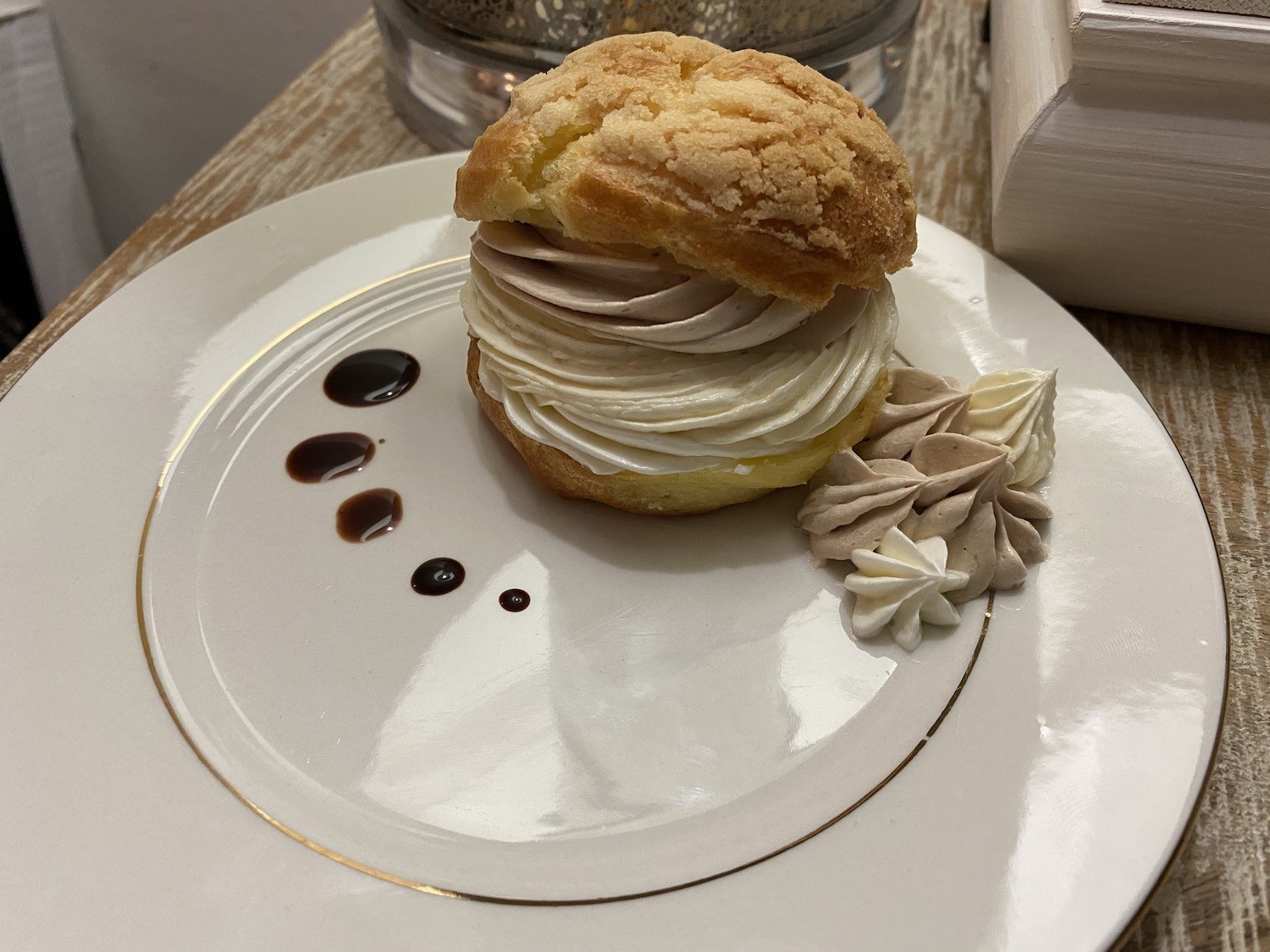
Cortez made Pâte à Choux with chocolate, almond, and vanilla ombre buttercream, and a chocolate espresso plating sauce.
Allec Cortez
Roslyn Spence has taught both culinary and baking classes at LATTC for 20 years, following in the footsteps of her 96-year-old mother, who for years was a private chef for Mohammed Ali and Bill Cosby. She sees “excitement out the roof in class, the sense that there’s plenty of opportunity out there.”
Until now, LATTC students rarely had the chance to break through, consigned to supporting roles in the kitchen by a perfect storm of obstacles. For starters, there’s basic math: the population of a professional kitchen exists in inverse proportion to its visibility. Chefs represent a sliver of the whole, presiding over kitchens that might have dozens of cooks, and their domain, fine dining, represents in turn its own microscopic slice of the restaurant pie. That segment has flatlined at about 1 percent of total restaurant traffic for several years; you have to squint to see the space between it and nothing, even as it draws a disproportionate share of attention.
This is evolution, not revolution, likelier to stick than if it were purely pandemic fallout.
The rise of the celebrity chef made things even tighter, about ten years ago, as ambitious culinary students stampeded toward big-name, high-end schools, fueled by the notion that chefs could get rich on a mix of talent and television exposure and social media. A 10 percent increase in annual enrollment doubled, and The Culinary Institute of America, Johnson & Wales, the Institute of Culinary Education, The French Culinary Institute (now ICC) and a network of schools that licensed the Cordon Bleu name were suddenly the most popular game in town.
Before too long, though, the process of becoming a restaurant chef started to feel uncomfortably like a Ponzi scheme: There simply wasn’t enough room at the top for everyone who wanted to get there. CIA, the most resilient of the marquee schools, made what now looks like the wise move, and diversified its curriculum with classes like food photography and bachelor’s degree programs in hospitality management, applied food studies, and culinary science. Less adaptable schools folded, shrunk, or merged, one by one: Last summer, ICE merged with ICC, and Johnson & Wales announced that it was closing two of its four campuses and shifting its focus from hospitality to academics. Le Cordon Bleu, the target of several class-action lawsuits charging misrepresentation of job opportunities and potential salaries, closed all 16 of its schools in 2015.
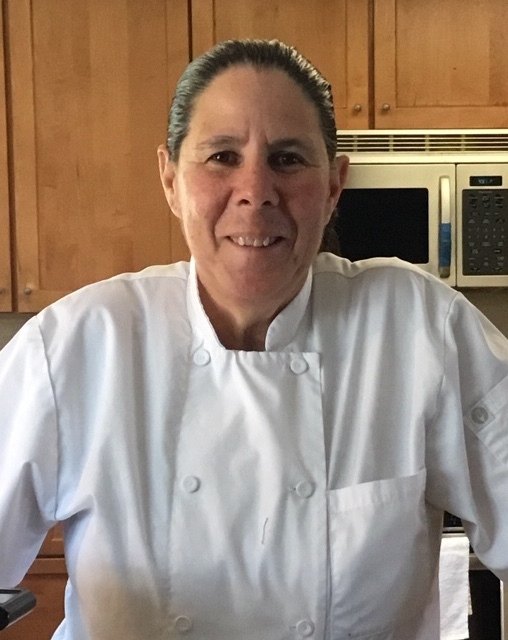
Chef-instructor Susan Feigenbaum.
Too many candidates for too few top jobs—and quantifiable discrimination about who got the call when a position opened up. The Bureau of Labor Statistics breaks down employment figures by gender, race and Latino ethnicity, and its most recent figures, from 2019, reflect a chronic imbalance in the professional kitchen. Of 474,000 chefs and head cooks, 63 percent were white and 78 percent were men; only 14.3 percent were Black, and 22 percent were women. “Cooks” is a far larger category—2,031,000, but white employees dominate there, too, at 70.4 percent—the only difference being that more of them, 44 percent, are women. The world Paul Freedman described, limited by gender, color and pre-existing privilege, continues not to be very interested in diversity at any level.
LATTC was never about what Freedman calls “the escalator,” a clean upward trajectory from an exclusive culinary school to a high-level, high-profile future. It is, instead, the Energizer Bunny of culinary schools, preparing generations of students for the vast mid-section of food-service jobs, providing a skill set and helping them secure employment.
Its students, over the years, were what chef-instructor Susan Feigenbaum, a 30-year veteran, refers to as “worker bees,” which she means as a compliment even though it is too often their fate rather than their choice. They’ve been the ones who work the line in a corporate dining room or a hotel, who execute the dishes a restaurant’s executive chef created, who get the work done but don’t move as far up the ladder as other candidates do.
Until now, LATTC students rarely had the chance to break through, consigned to supporting roles in the kitchen by a perfect storm of obstacles.
And they don’t usually have the means to strike out on their own, unlike some young culinary school graduates, pre-pandemic, who raised funds from friends and family to open their own restaurants. LATTC’s students come primarily from the school’s South Central Los Angeles neighborhood, a low-income area long before Covid started costing people their jobs. Over 75 percent of students receive financial aid; over 26 percent of area residents are under the poverty line, more than double the figures for California and the United States. LATTC, which is accredited by The American Culinary Association, paid for the new building it can’t yet use with funds from a 2018 bond measure designed to improve the state’s 19 community colleges, and help more of its students end their dependence on social assistance programs.
“We’re dealing with a different population than other schools in terms of ethnicities, cultural differences, economics,” said Feigenbaum. “It’s not like our students can just say, ‘I’m going to sign up for a master class, $500 a class, and go buy the ingredients. They don’t have that luxury; they desperately need those ingredients.”
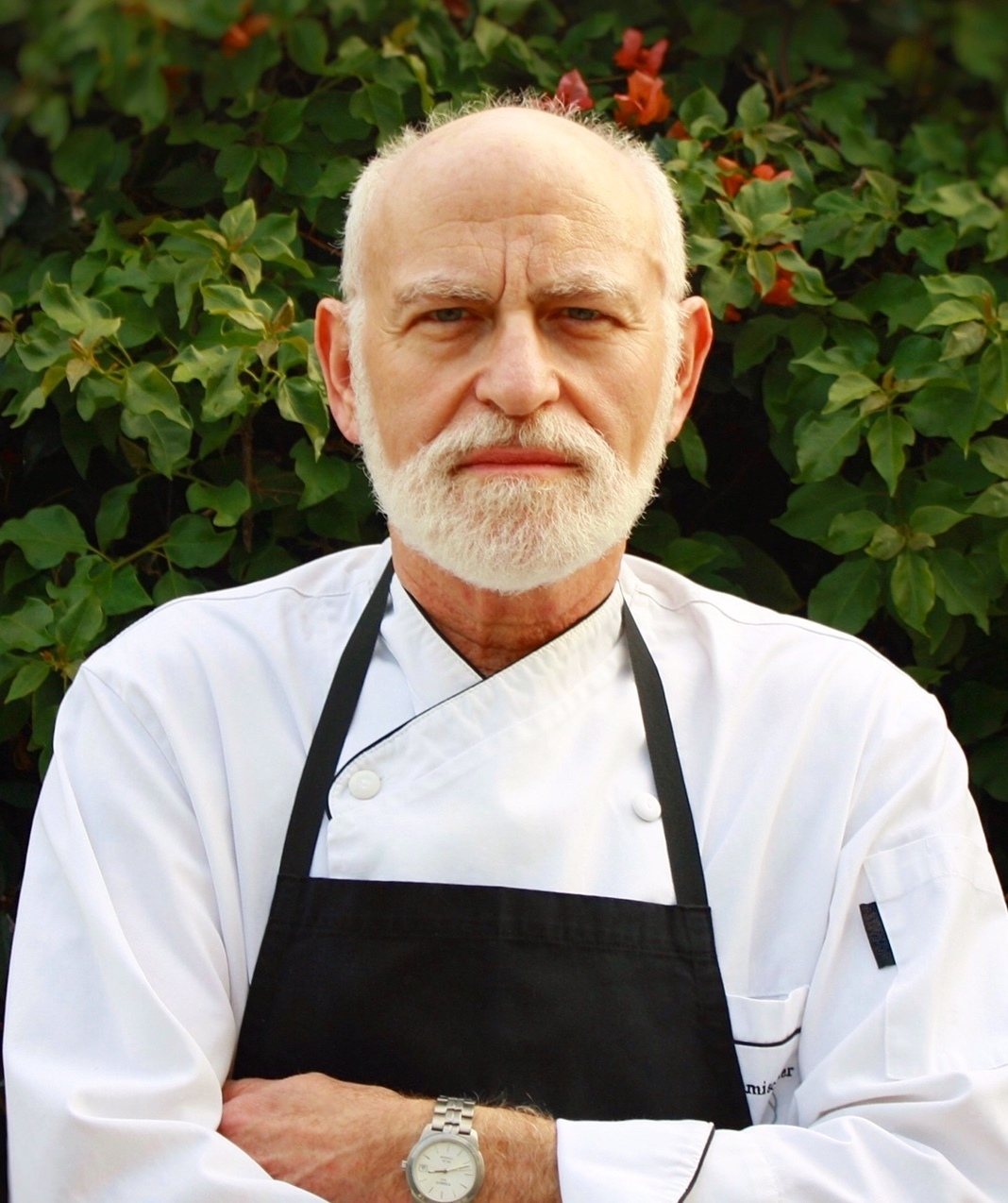
Chef-instructor Robert Wemischner.
In fact, ingredient boxes made the difference for some students who were unsure about signing up for virtual school.“We were miniscule before we announced that we’d provide ingredient boxes,” said Gilligan, referring to enrollment figures for the virtual semester that began in August. “I was going to have to cancel some of the classes.” One of the casualties was Feigenbaum’s class on soups and sauces—which was off the roster until a surge in applications filled it up again, by which time she’d switched to a breakfast class instead.
A comprehensive education in all aspects of food service is still the foundation of LATTC’s curriculum, even if it means that tomorrow’s cooks would learn to mop floors if only they could go indoors.“These are not prima donnas,” said Gilligan, of the way things usually work. “As soon as you come in the door, you’re feeding the public,” which used to mean staffing a cafeteria that served 400 meals a day, a full-service dining room that seats 60, a coffee bar and a coffee cart with food and snacks, as well as running a catering service. On-the-job training was an essential part of the program, and will be again, with expanded hours and seating, once the new facility opens.
“You can’t teach that pressure,” he said. “You have to put them in the environment and let them experience it. It’s why people hire people from LATTC. They’ve taken a class in stewardship, washing floors, washing dishes. They come out as ServSafe certified food managers, a step up from food handler, and there has to be a manager on every shift, so that helps them get hired.”
But hiring is up for grabs, nine months into the pandemic. At its peak in June, 2019, the restaurant industry in the Los Angeles metropolitan area employed over 401,800 people. By September 2020, that number was down to 294,800, wiping out most of the growth of the last ten years; nationwide, the restaurant sector suffered one-fourth of all Covid-related job losses, the largest number of any sector of the economy. There was an uptick in restaurant hirings that month, but with the current spike and stay-at-home orders, workers stand at the precipice and wonder if they’re going to be pushed off the cliff yet again.
LATTC has been the Energizer Bunny of culinary schools, preparing generations of students for the vast mid-section of food-service jobs, providing a skill set and helping them secure employment.
About 110,000 restaurants have closed permanently or long-term, and we haven’t yet seen the full impact of rampant new cases and winter.
Hardly a welcoming landscape: lack of access because of institutionalized discrimination, lack of financial resources to underwrite an alternative path, all of it compounded by rampant unemployment, which throws previously-employed and more experienced cooks back into the job pool to compete for fewer positions.And yet, LATTC faculty and administrators see a changed attitude among many of their students—an entrepreneurial spirit, a sense that an unsettled world might be ready for new options that promise more stability and better earnings, down the line, than the traditional mid-level food-service gig.
Nationwide, the restaurant sector suffered one-fourth of all Covid-related job losses, the largest number of any sector of the economy.
The old order has been fractured not only by the pandemic but by #metoo and Black Lives Matter, which shine a harsh light on who gets to feed us, from restaurant owners to chefs and cooks, to farmers and media personalities on cooking shows. There are cracks in the façade, and students like Eric Campbell intend to shoulder their way into those new spaces rather than settle for a job working on someone else’s dream.
He talks about having a new confidence, which translates into a desire to imprint his ideas onto status quo dishes. Feigenbaum teaches her class how to make eggs Benedict, a classic breakfast dish consisting of a split English muffin, each half topped with Canadian bacon, a poached egg, and hollandaise sauce. But Campbell balked: He’s never liked hollandaise sauce because he doesn’t like Tabasco sauce, and his catering experience has taught him that his Black customers tend not to like runny eggs.
His version, which he dubbed Soul Benedict, used adobo sauce instead of Tabasco, cheese grits instead of an English muffin, and fresh salmon broken down and made into crunchy croquettes, “so you’re still going to have to deal with this runny egg,” he said, “but look at all these other things that make the dish terrific.”
“I can ‘see’ a recipe,” he said, “the blueprint, the flavor the author is going for, and then I can hear another melody.”
Roslyn Spence went to Le Cordon Bleu in Paris 30 years ago, and recalls taking offense when a white classmate assumed that Spence would be responsible for soul food at a student potluck. Her students, in contrast, are eager to stake their culinary identities, and she thinks the time is right. “The pandemic has brought a sense of what’s really important,” she said. “There’s finally some of ‘What I cook matters,’ both me, as a Black woman, and anyone, wherever they come from. There’s so much value being put on anyone’s culture of cooking, when for many years we’ve justified what cuisine should look like based on the people who are moving way up in the industry, rather than the rest of us.”
“There’s so much value being put on anyone’s culture of cooking, when for many years we’ve justified what cuisine should look like based on the people who are moving way up in the industry, rather than the rest of us.”
“And the beauty of it is that we’re still teaching technique, but now you apply that technique to the food you’re already cooking,” she said. “Something about that just shines so brightly.”
—
“Adversity is the mother of invention,” said Gilligan, in a short ode to understatement. He figures that 65 percent of LATTC students “are just happy to have a good-paying job when they get out,” but it’s his job to provide a “hand-up” experience no matter what plans a student might have. That means staying away from the pie-in-the-sky promises that he feels contributed to the demise of some better-known schools.
“One reason places closed? They said you’re going to be the next Food Network star, the next chef at the Peninsula Hotel in Beverly Hills, all you have to do is pay for college,” he said, “and then they graduate and find out they’re going to make $15 an hour for the first eight years.”
Gilligan preaches the SMART plan instead—a set of goals that are Strategic, Measurable, Achievable, Realistic and Timely. Students write theirs down, present them to the class, and move forward with a dose of humility about how they’re going to achieve those goals.
“You have to go through a mental mindshift,” said Gilligan, of students’ need to right-size their dreams. “I’m not looking at how much money I’m going to make, I’m going to serve you. The ones who are successful have that mindset to begin with, and then, maybe, people throw money at them.”
—
Instructors this year are often as hamstrung as their students. Feigenbaum’s breakfast class early one morning was all about batter, from French toast to the Monte Cristo sandwich, turkey, ham and two cheeses, the whole thing soaked in leftover French toast batter and deep-fried—or not, because she didn’t have a deep fryer at home. She tried to make it work on a griddle until she ran into what she called “technical difficulties” with the demonstration video. A sandwich on the griddle suddenly morphed into a new sandwich in a pan; the first one “was bleeding cheese and melting out,” said Feigenbaum, and she didn’t want the students to think the end product was acceptable. Besides, she had lost some of the footage when she was editing.
“We work with what we have,” she said.
“My final breakfast class used to be, make three or four dishes in a two-minute window, but you can’t do that and make a video with a tripod in your hand.”
What she misses more, and worries about more, is the absence of hustle, the real-world kitchen experience that should have begun on the first day of school. “What we’re learning here is fine and dandy, but you have to think of the mindset at work, where we’re not making one or two sandwiches but 12 in a very short window,” said Feigenbaum. “My final breakfast class used to be, make three or four dishes in a two-minute window, but you can’t do that and make a video with a tripod in your hand. And the question needs to be, how do we make this dish feed not one or two people but 100 people? If you’re working a catering job or a food truck that’s what you need, and that’s what we don’t see now.”
“Every day we hear about another famous restaurant closing, they’re not surviving in this reality, so think of the new mentality,” she said, which she believes will have more to do with volume than with exclusivity. “If I have to do that Monte Cristo sandwich 100 times, that’s a lot of work.”
Like Wemischner, she struggles to evaluate assignments she can’t taste. “How do you judge? You hope for the best,” said Feigenbaum. “It’s hard to critically evaluate an English muffin, and the eggs look good, they’re easier to critique than a cake which might have not enough sugar, too much salt, but at least a poached egg might look really good. If they say, ‘Wow, the whole family ate this coffee cake, it’s great,’ I have to trust that.”

One of Maria Guzman’s creations. After losing her bakery job before the pandemic, Guzman started making coffee cakes and cookies in her apartment oven for weekend delivery orders.
Maria Guzman
She has come up with a two-tiered approach, hoping simultaneously to help students who seemed most vulnerable to circumstance and reward the initiative of their more ambitious classmates. A student who didn’t complete an egg preparation might well be cooking those eggs to feed the family, Feigenbaum assumes, so she encouraged students with empty photo albums to post any kind of egg dish, to provide evidence that they are cooking at all. She can’t bring herself to be as hardline with them as she otherwise might be, but she told them that she had to see something in those albums to be able to issue a passing grade.
A student who posted dozens of photos, or skewed a dish in a creative way, got a different kind of encouragement, because those are the ones who might find an opening in the up-for-grabs world of food service. She acknowledged one student who turned out a coffee cake even though he didn’t have a stove at home. “I have to put Luis out there,” she said. “He has a little toaster oven and he bought a disposable pan that fit and made a great coffee cake, kudos to him for giving it a try.”
And she reminded everyone that the habits they develop here are going to set them up once they hit the job market, for better or worse. “Either you’re here and working, striving for the best,” she said, “or you’re out the door.”
—
Covid has laid waste to an industry hierarchy in a way that good intentions and diversity initiatives have not, not yet. Some places are close to immune: New York’s Le Bernardin, where the tasting menu and wine pairing goes for $395, has survived so far, in part because of almost $500,000 from a GoFundMe campaign and an anonymous donor, as well as an empathic landlord and the Paycheck Protection Program. But there are shuttered legends everywhere, up and down the economic scale; Los Angeles has lost Patina and Pacific Dining Car (which swears it will rise again), Beverly Soon Tofu House and Stan’s Donuts. Covid is an equal-opportunity scourge; there are lots of empty spaces to fill.
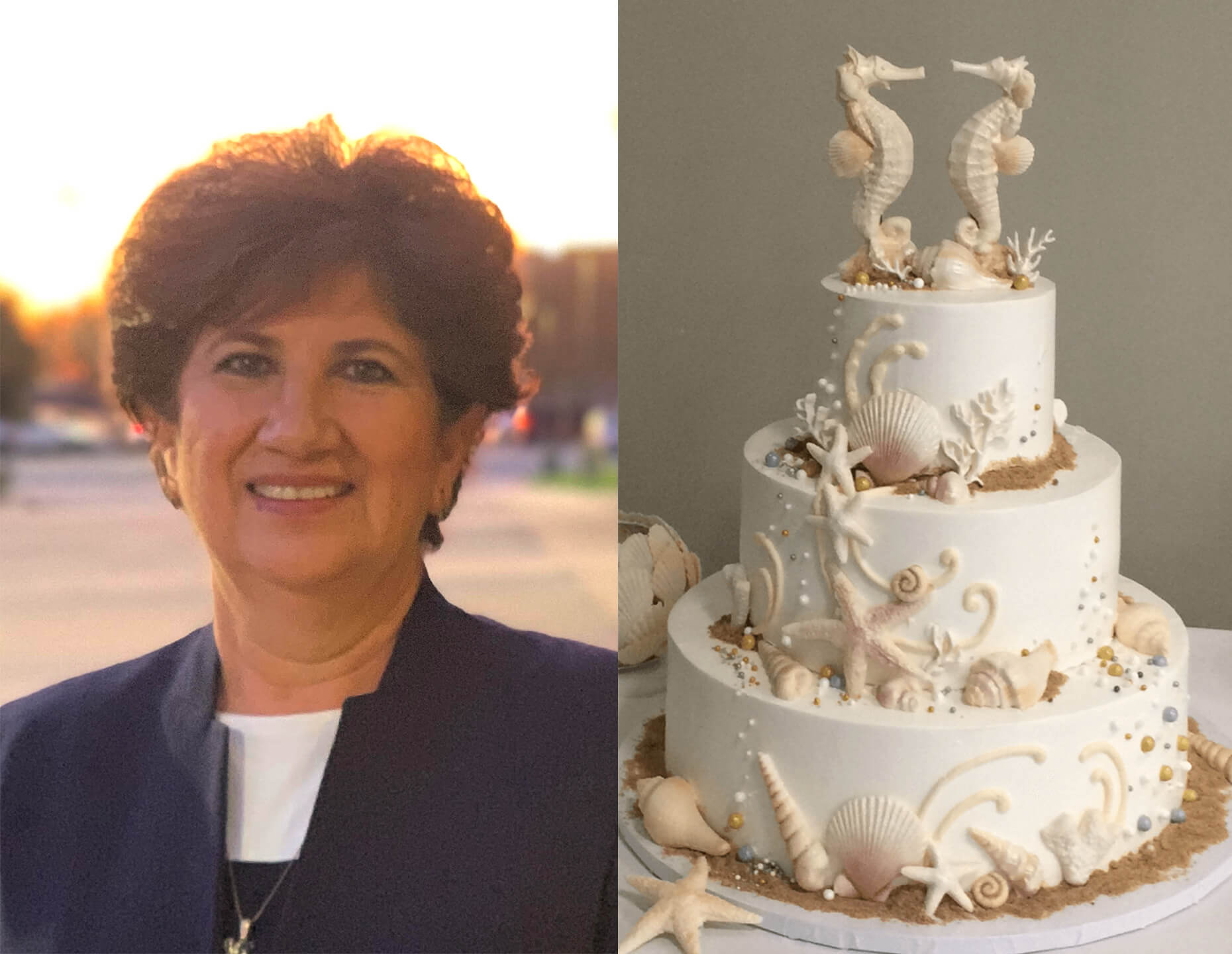
Martha Sanchez, 58, has been a cake decorator for 25 years. She enrolled at LATTC with the hope that she’ll eventually be able to teach at a vocational school or adult learning program.
Martha Sanchez
For chef casualties at the high end, reality’s a long drop, and the bottom’s hard to see when regulations constrict and expand like an accordion, based on case numbers. Freedman and Coraine agree that fine-dining places won’t come back full-force—and a smaller place is less of a correction for LATTC students with an entrepreneurial spirit than it is for chefs who have run a full-service kitchen and equate that job with success. A self-sufficient life in food can look like an opportunity or a disappointment, depending on where a cook used to stand.
Martha Sanchez has been a cake decorator for 25 years, and until 2017 owned a small cake supply store with a classroom in the back—but her husband died in 2015, and Sanchez, now 58, found it hard to run the business alone. She couldn’t bring in enough income teaching for the new owners part-time, so she inquired at an employment preparation center in Congresswoman Maxine Waters’ district, and found out that all those years of experience weren’t enough. She needed a degree to teach, so she enrolled at LATTC.
Her goal, once she graduates, is to teach at a vocational school or adult learning program. That, for Sanchez, is success. “I love decorating,” she said, “but I like more to teach, pass everything I know on to the next generation. It’s very satisfying when you make a cake, from nothing, and turn it into a masterpiece.”
“People are hip to all the possibilities, all the less governmentally-regulated things. It’s a sea change, and our students are aware of it.”
Maria Guzman, age 37, loves cake decorating as well, but she lost her bakery job right before the pandemic, has two children, and needed to find a way to turn baking into income. She started making coffee cakes and cookies in her apartment oven, “lots of different flavors,” and every Thursday she sent messages to people about orders that she delivers on the weekend.
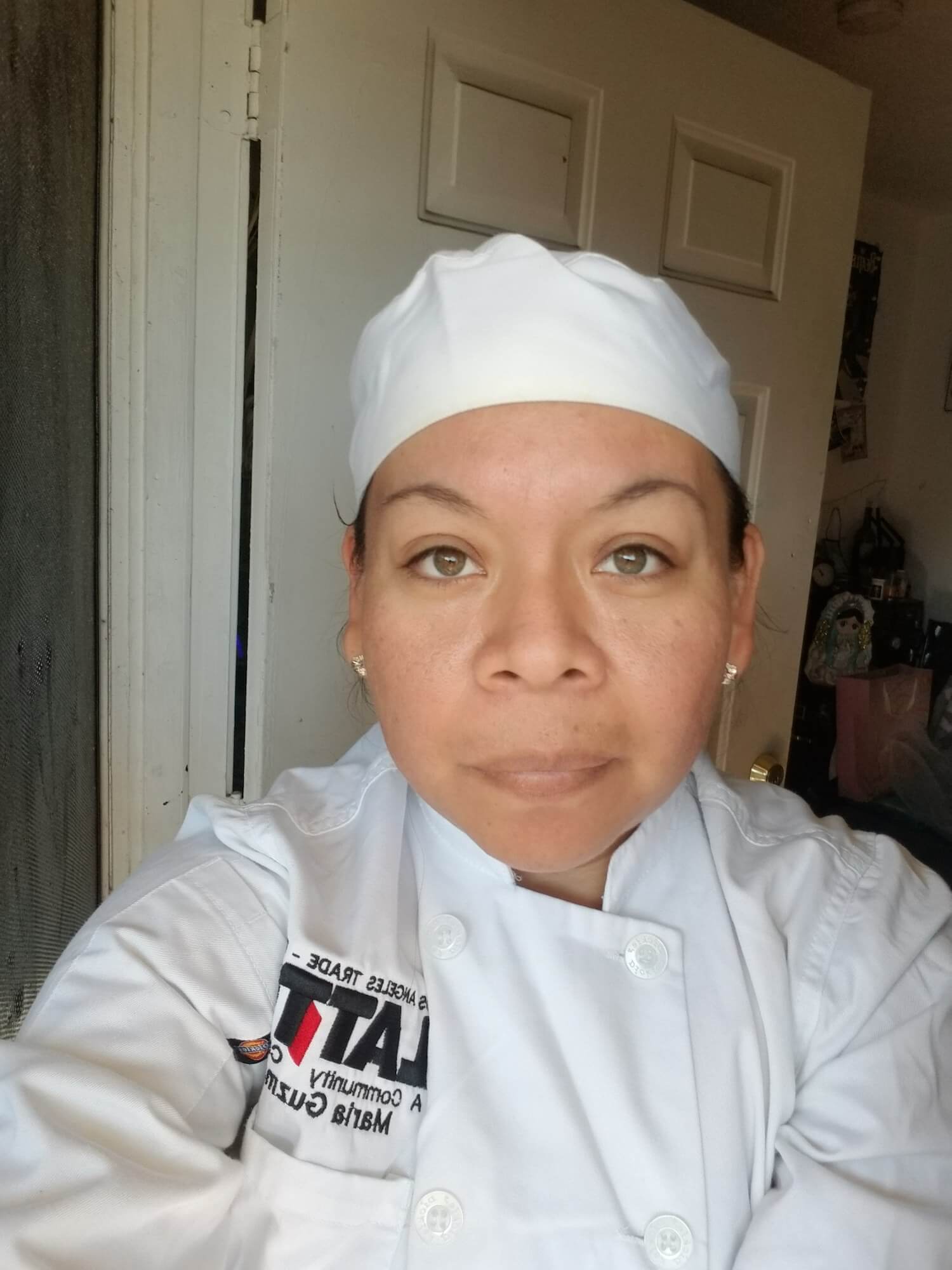
Maria Guzman, 37, lost her bakery job right before the pandemic. School improves her technique and one day she hopes to land another cake-decorating job or run her own small bakery.
School improves her technique; production, in turn, improves her performance at school; and all of it, she hopes, will pave the way back to a cake-decorating job, perhaps even her own small bakery someday. It’s not the trajectory that launched a generation of big names, but it is a life in food, which feels sufficient.
“Decorating is my passion,” Guzman said. “When I’m decorating cakes, my mind just flies.”
“People are hip to all the possibilities,” said Wemischner, “all the less governmentally-regulated things. It’s a sea change, and our students are aware of it. It’s in the zeitgeist, in the air, in the back of their minds. ‘Maybe I can work in someone’s existing kitchen to produce my own product’ rather than pay for a ghost kitchen and delivery service. They’re filled with ingenuity. There’s a lot more possibility these days. Cottage industries, do stuff at home—or just do it until you get caught.”
“It’s a rogue mentality, but it holds promise for people whose pockets are not deep, who need to make money to stay alive.”
“We’re at the intersection of patience and perseverance,” said Coraine. “If you can park your mind on, ‘Yes, it sucks right now but it’s going to change,’ get your skills and your plan together, there’s going to be a space for you. There’s going to be another side of this, and if you’re ready to go you’ll be ahead of the rest.”


